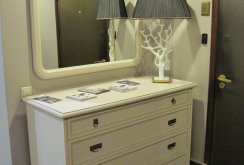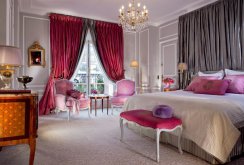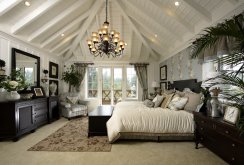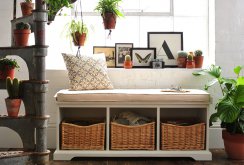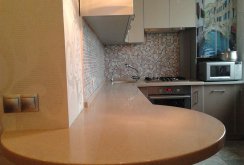Bathtubs: classification and variety of choices
Bathtubs are an indispensable attribute of the bathroom of a city apartment, private house, hotel, sanatorium or holiday home. In any specialized store, the catalog contains dozens, and sometimes hundreds, of the names of these products. The first specialized washing containers appeared in India more than 5 thousand years ago; a real bath cult existed in Ancient Rome and Japan. This has become the reason for the variety of products offered today; a potential buyer is forced to make a comparison before buying according to a number of criteria. The advent of modern materials and technologies has further diversified the classification of bathtubs. All this allows you to make the best choice.Bath Materials
In ancient times, bathtubs were made of wood and natural stone, today containers made of these materials are considered exotic, as are exclusive models of glass and ceramics. In mass production, three main materials are used:- cast iron is a practical material, the main disadvantage of which is considerable weight, for this reason users and manufacturers have turned away from it, but true connoisseurs of relaxation in the bathroom still use cast iron products. It stores heat as long as possible, the water in it cools slowly, and does not make noise when collecting water. Cast iron is ductile; this makes it possible to make various types of bathtubs from it in shape and decoration;
- steel - 3 mm thick sheets are used in the manufacture of products; as a result, the bathtub is light, inexpensive. Enamel fits perfectly on steel, so the surface is smooth to the touch, has a pleasant tactile feel. The disadvantages include a high noise level during water intake, rapid heat loss, the appearance of dents on the surface, a small number of design options;
- acrylic - this polymer material quickly became the main one in the manufacture of bathtubs, it maintains a high temperature of water for a long time, has a small weight, and is pleasant to the touch. Casting containers are made and this allows you to create products of the most complex shapes.
Bath classification by shape
A variety of materials implies the most different forms of containers; according to this feature, bathtubs of the following types are distinguished:- rectangular - are characterized by simple installation, unpretentiousness during operation, practicality. More than 50% of buyers prefer bathtubs of this type, they are installed close to the wall, saving space in small bathrooms;
- oval - not demanding on the used area, but the operation of such models makes it difficult to organize additional waterproofing of the room;
- round - demanding free space, recommended for large bathrooms with installation in the center or at the window;
- angular - original modern models are installed in a corner and allow you to effectively divide the space of the bathroom into zones.
Size matters
Bathtubs of different sizes are produced, which are combined into three main groups:- small - 120-140 cm long, in such models you can swim while sitting or half-sitting, they are ideal for children and for small combined bathrooms;
- medium - the length is 150 cm, they can relax reclining;
- large - 160-170 cm long, allow you to take the procedure completely in a supine position.
What is more convenient to wash?
Not all doctors recommend hot baths, so manufacturers produce two main types of baths:- sessile - the bottom has a complex shape, a seat is formed in it, which allows the main part of the body to be above the water. Such a design can be not only in small bathtubs for combined bathrooms, but also in modern corner models;
- lying - the bottom is created in one plane, which allows you to lie down or take a reclining position.
Choosing a bath design
Despite the practicality of this plumbing equipment, manufacturers offer several types of bathtubs:- classic - differ in flat planes and bends, without much interior load;
- modern - high-tech models, complemented by decorative metal inserts and built-in equipment;
- Imperial - luxurious bathtubs with rich decorative design in the ancient Roman style or with elements of Rococo and Baroque.
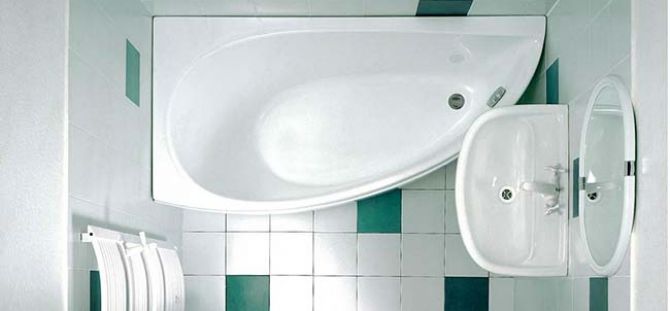
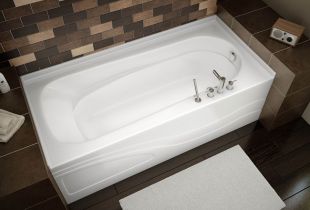 Pros and cons of an acrylic bathtub: some ideas for any interior
Pros and cons of an acrylic bathtub: some ideas for any interior